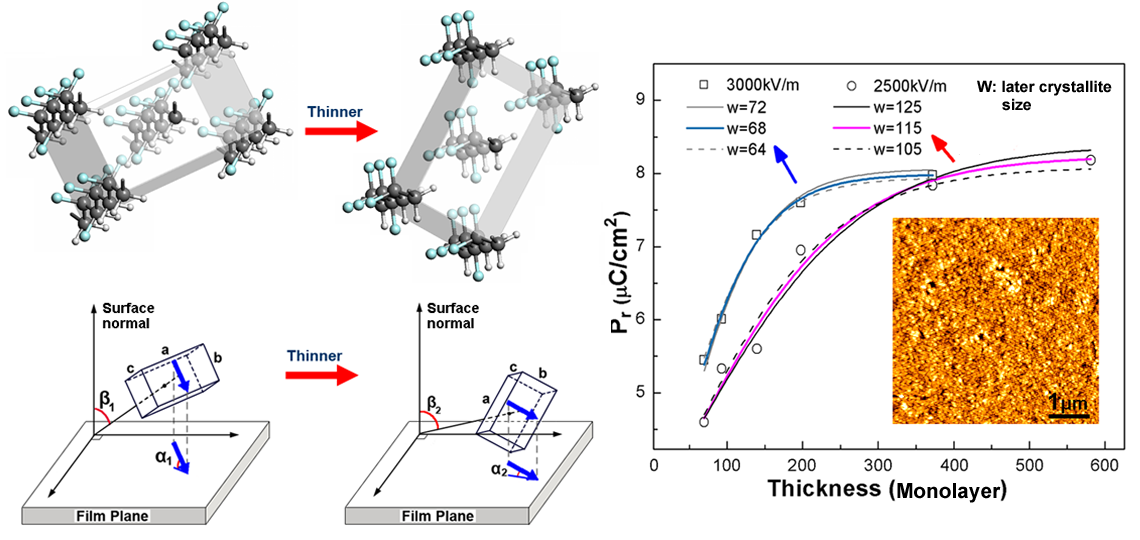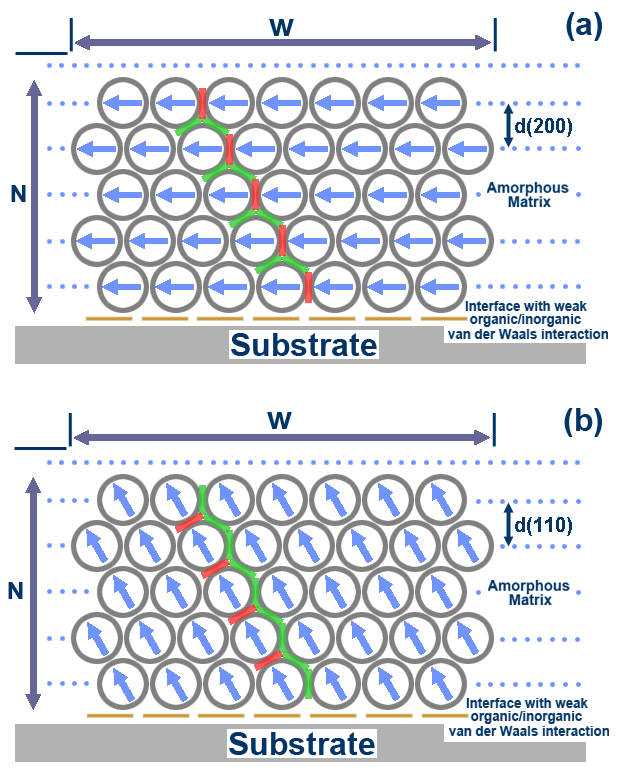P(VDF-TrFE), a typical organic ferroelectric material, has been widely used in sensors, actuators and other microelectromechanical systems. The rapidly growing flexible electronics industry has recently stimulated intense research interest on new devices based on thin P(VDF-TrFE) films, such as nonvolatile memoriesand solar cells, etc.
A serious problem of the ferroelectric polymer film is the deteriorated ferroelectricity with reducing structural dimension. The mechanisms underlying such a size effect in P(VDF-TrFE) films are still far from being clear, although the similar phenomena in traditional inorganic ferroelectrics have been extensively studied. Elucidating the details is of great importance from both fundamental science and application points of view.
Professor GUO Dong from the Institute of Acoustics, Chinese Academy of Sciences (IACAS) and Nava Setter from the Swiss Federal Institute of Technology demonstrate a distinct confinement induced cooperative lattice orientation change in ultrathin P(VDF-TrFE) films by using various characterization techniques. It is constituted of X-ray diffraction (XRD), two-dimensional X-ray diffraction (2D-XRD), grazing incidence X-ray diffraction (GIXD) and infrared reflection absorption spectra (IRRAS).
Both the polymer chains and the molecular dipoles perpendicular to the polymer backbone showed a lying-down orientation change with decreasing thickness. The dipole orientation change showed a good correlation with the thickness dependence of remnant polarization, which were measured from highly reproducible ferroelectric loops in a wide range of thickness (30-–250 nm) on inert electrode with suppressed “depolarization effect”. A simple microscopic molecular dipole interaction model revealed that the free energy of different orientation states was related to the thickness and lateral dimension of the polymer crystallites.
The findings reveal a unique molecular orientation driven size effect in ferroelectric polymer films. It has provided new insights into the nature of ferroelectricity and orientation mechanisms in polymers relevant to the design of emerging flexible electronic devices.
The research titled “Impact of Confinement-Induced Cooperative Molecular Orientation Change on the Ferroelectric Size Effect in Ultrathin P(VDF-TrFE) Films” has been published on Macromolecules(Vol. 46, No. 5, Pages 1883-1889, 2013).

Fig.1. Left panel: schematic illustration of the confinement-induced overall P(VDF-TrFE) molecular orientation change with polymer lattice, where the blue arrows represent the dipoles. Right panel: fitting of the thickness dependence of Pr for the films on Pt; the inset is the AFM image of a 85nm thick film on Pt (Image by GUO Dong).

Fig.2. Schematic illustration of the dipole–dipole interactions with parallel dipoles (case 1, a) and 60o tilted dipoles in relation to the substrate (case 2, b). The red and green slabs represent the head-to-tail and side-by-side dipole interfaces, respectively, and d(200) is not equal to d(110) ( Image by GUO Dong).
Contact:
GUO Dong
Institute of Acoustics, Chinese Academy of Sciences
E-mail: dong.guo@mail.ioa.ac.cn


